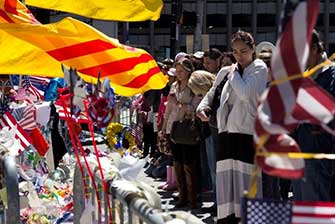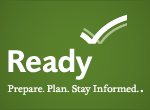Coping with a Disaster or Traumatic Event
Resources for State and Local Governments
State and local health departments should include mental health management in each phase of a disaster (pre-event, response, recovery, and evaluation).
Pre-Event Phase
Assess these community characteristics:
- Culture, religion, ethnicity
- Shared values
- Social resources
- Access to healthcare
- Average level of education
- At-risk populations
- Languages
- Non-governmental and community-based organizations
Assess:
- Understand demographic and social characteristics. Identify the language needs and reading levels in your area.
- Build relationships with public health officials, community stakeholders, private and public medical providers, and school officials.
- Identify staff support policy and resources.
- Find behavioral health treatment facilities in your state.
Plan:
-

Establish relationships with mental health partners ahead of time. Determine how they will serve mental health in an emergency.
- Establish the role of partners, like community-based organizations, in mental health services during an emergency.
- Identify and train mental health professionals and response staff to provide counseling, triage, outreach, and education during a crisis or emergency.
- Plan for interpreter services.
- Train provider groups including public health nurses, school health professionals, and community support workers, in psychosocial consequences of terrorism and disasters.
- Develop a risk communication plan and templates.
- Develop a triage system to connect victims with emergency mental health services when needed.
Response Phase
- First meet basic safety and security needs of target populations.
- Provide Psychological First Aid at response sites.
- Use risk communication principles in all messaging.
- Continue to monitor the mental health needs of victims and responders.
- Provide access to counselors in all appropriate languages.
- Distribute educational information appropriate to the event.
- Use triage system to connect victims in acute distress with professional services.
- Provide coping resources for responders and their families.
Recovery Phase
-

Give the community opportunities to come together.
- Continue to monitor mental health needs in the affected population.
- Train social and community leaders on how to help their groups cope.
- Give the community opportunities to come together.
- Promote availability of and ongoing need for coping and resources.
- Anticipate and plan to deal with trauma reminders (such as anniversaries of the event date, or the broadcast of similar incidents on the news).
Evaluation Phase
- Monitor for long-term mental stress in the community and for Post-Traumatic Stress Disorder (PTSD).
- Identify and address gaps in your mental health preparedness plan.
- Page last reviewed: March 25, 2016
- Page last updated: November 7, 2017
- Content source:
- Maintained By:





 ShareCompartir
ShareCompartir